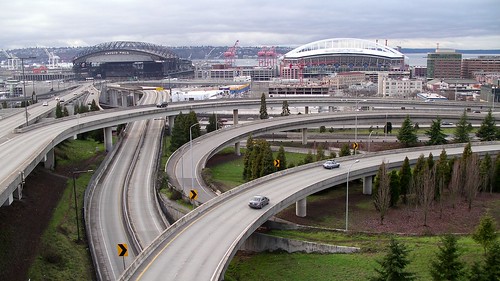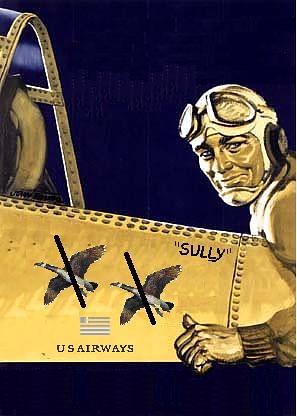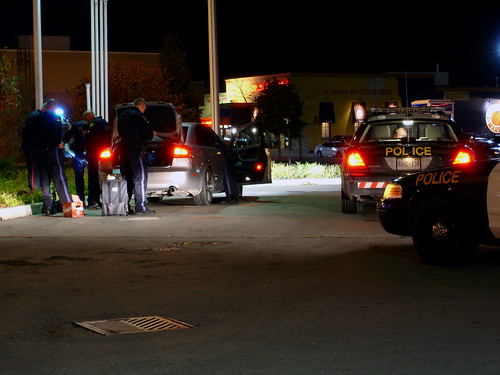(Source: Streetsblog)
Ultimately, SAFETEA-LU’s greatest failing may have been its failure to articulate a truly multi-modal vision for the nation’s surface transportation network. Essentially a continuation of 1950s-era policies, it repeated the same-old same-old about a need to complete the Interstate highway program, directing billions of dollars to state DOTs to pour asphalt and expand roadways. Nowhere did the legislation suggest a need to adapt to a future in which American dependence on automobiles and fossil fuels must be dramatically reduced. That’s the challenge faced by Congress today.

Less of this...
Transportation funding from Washington has been heavily weighted toward highway spending ever since President Eisenhower first proposed the Interstate Highway Act in 1956. SAFETEA-LU, 2005’s federal transportation bill, was no exception. It provided $244.1 billionover five years, its revenues raised by the federal gas tax and directed to the Highway Trust Fund, which has both highway and mass transit accounts. $40 billion a year went to highways, most of which was used to expand and upgrade the Interstate highway system; some $10 billion went annually to mass transit.
The $10 billion in public transportation funds is distributed by the Federal Transit Administration (FTA) for a variety of uses. The FTA administers the urban areas program, which allocates money to metropolitan areas for transit system capital expenses, as well as a rural areas program that helps states pay for rural transit. SAFETEA-LU also included a fixed-guideways formula, aimed at keeping mostly older rail transit systems like those in Chicago or Boston in working condition. Finally, the New Starts/Small Starts program allowed the FTA to fund competitive grants for major capacity expansion such as new subway or bus rapid transit lines.

More of this...
SAFETEA-LU provided for $40 billion in annual funding from the highway account, the traditional federal source for financing Interstate highways. But under the law, money from the account could actually be spent on more than just roads. Roughly $6.5 billion per year was allocated to the “Surface Transportation Program.” States were allowed to use this money to fund transit and “bicycle transportation and pedestrian walkways.” The “Congestion Mitigation and Air Quality Improvement Program” — about $1.7 billion a year — went to projects likely to reduce pollution, and specifically forbade funding “a project which will result in the construction of new capacity available to single occupant vehicles.”
There’s one problem, though. The federal government may allow such funds to be spent on non-auto uses, but that’s rarely the case.
That’s because, while each metropolitan area has a federally-mandated Metropolitan Planning Organization (MPO) whose role is to establish priorities for transportation investments, state departments of transportation have ultimate discretion over how national highway funds are used. The inevitable consequence? Asphalt-happy DOTs usually choose to invest highway funds in roads, even when MPOs advocate for improved transit or bikeways. According to Transportation for America, only five states — California, New York, Oregon, Pennsylvania, and Virginia — have taken advantage of the flexibility of these funds. The rest have spent the vast majority on auto infrastructure.
What’s more, SAFETEA-LU made it easy for states to build roads and hard for them to build transit projects. While funds for new roads were simply distributed to states based on a formula, new transit lines had to undergo the rigorous New Starts process — competing with other projects from all over the country — before winning a share of federal dollars. There was no such required audit for road projects.
Click here to read the entire article.
 Even pirates need a business plan. J. Peter Pham, an analyst of African affairs at the James Madison University, looks at the economics of guns, captains, and $2 million dropped into the sea in waterproof containers. Plus, Per Gullestrup, CEO of Danish shipping company Clipper Group, has dealt with pirates first-hand — he says they’re tough negotiators. When he ironed out the ransom details with the pirates, he had 3 demands:
Even pirates need a business plan. J. Peter Pham, an analyst of African affairs at the James Madison University, looks at the economics of guns, captains, and $2 million dropped into the sea in waterproof containers. Plus, Per Gullestrup, CEO of Danish shipping company Clipper Group, has dealt with pirates first-hand — he says they’re tough negotiators. When he ironed out the ransom details with the pirates, he had 3 demands:








